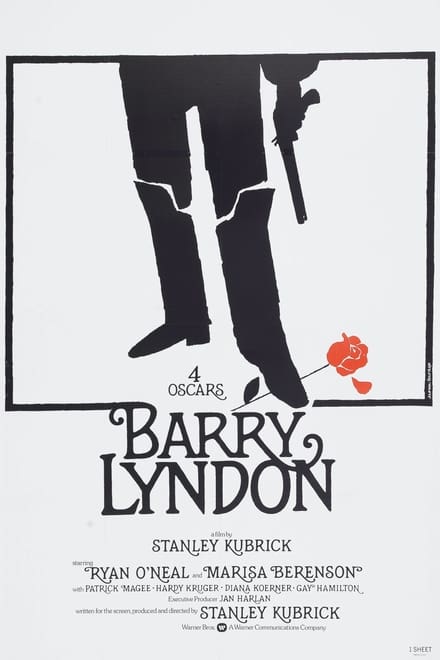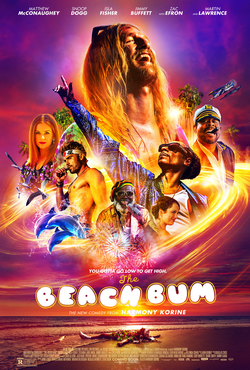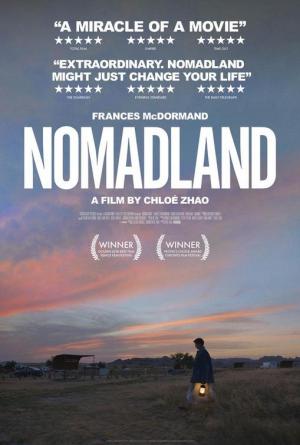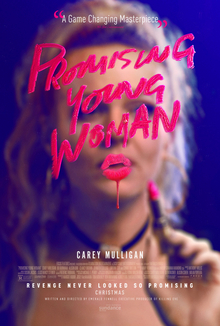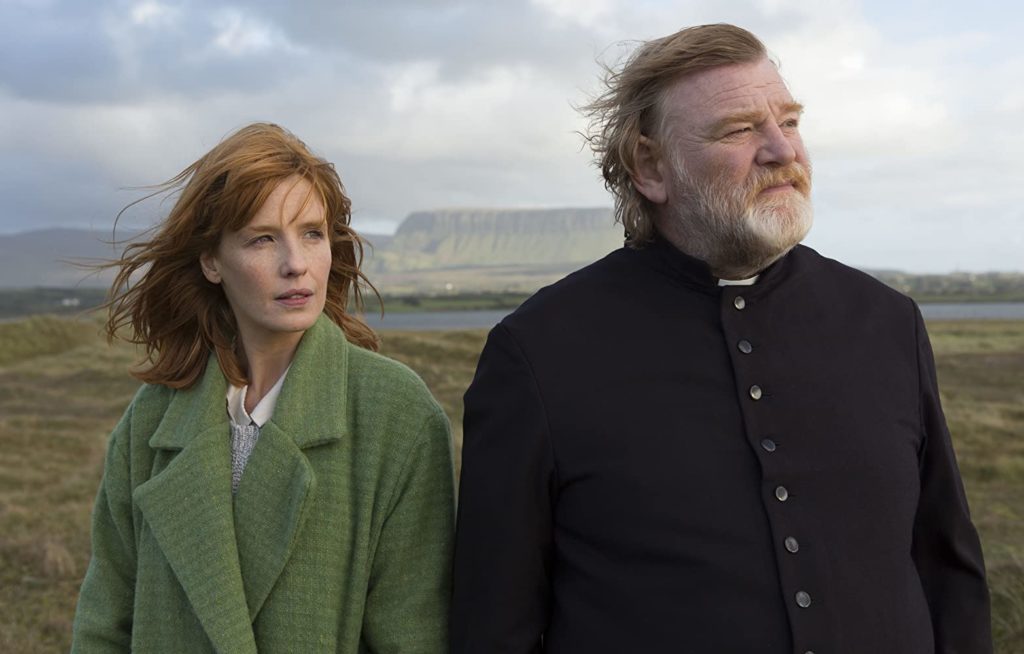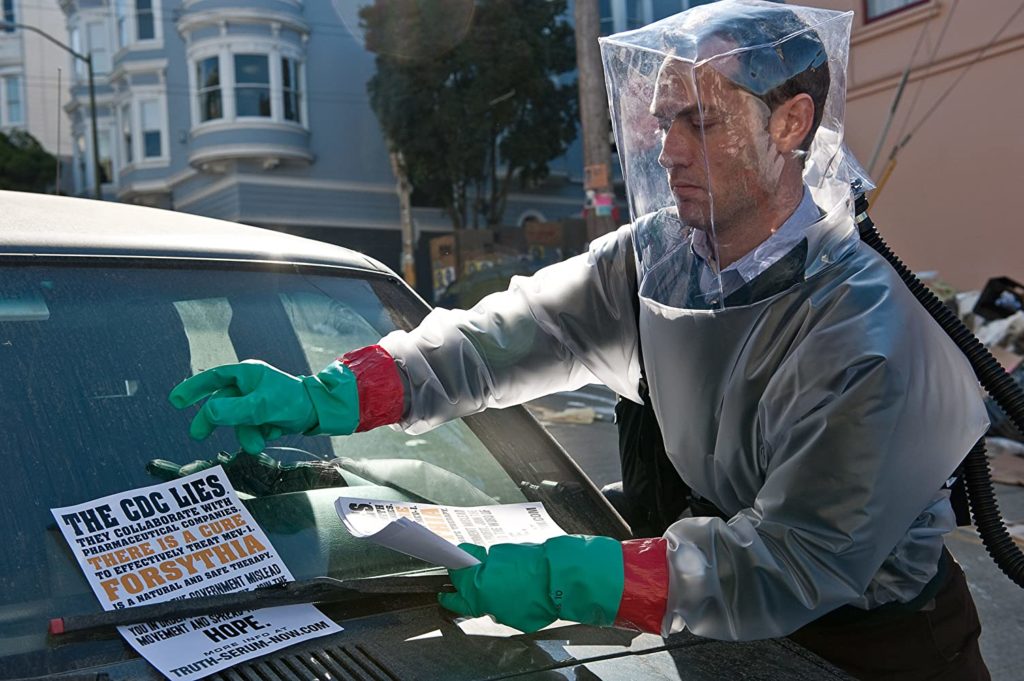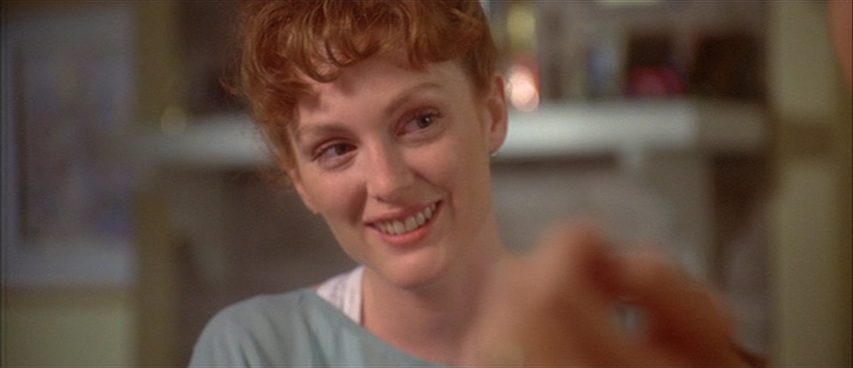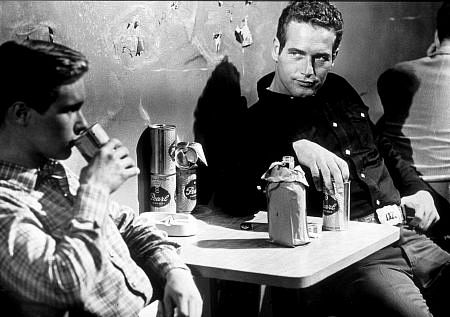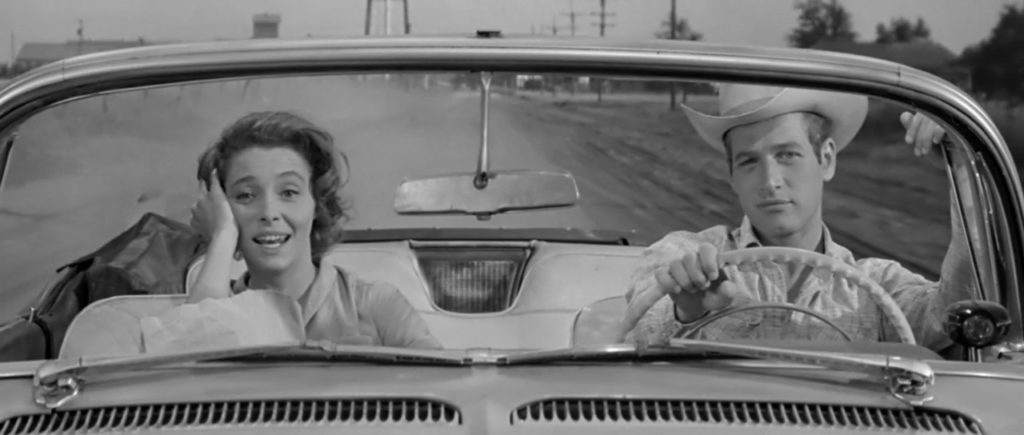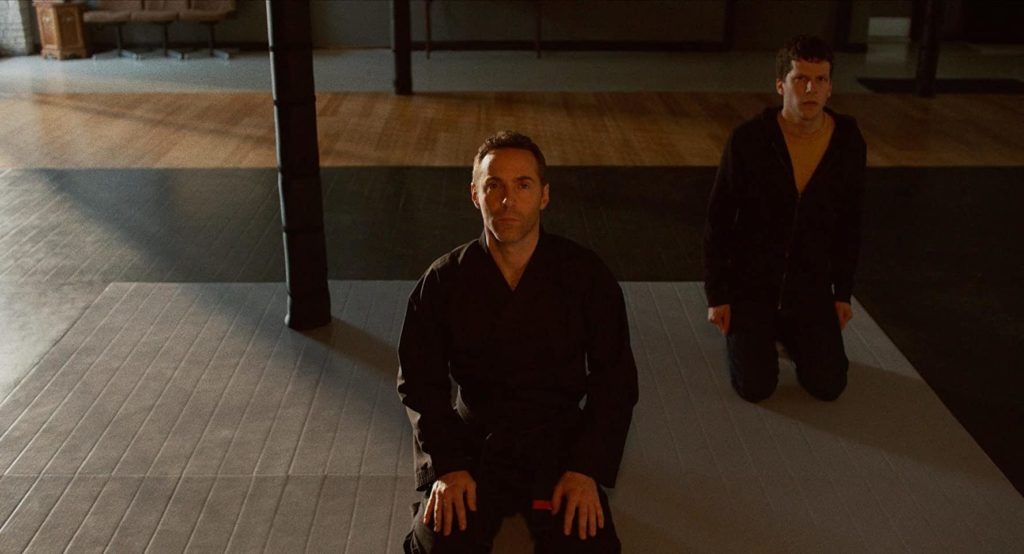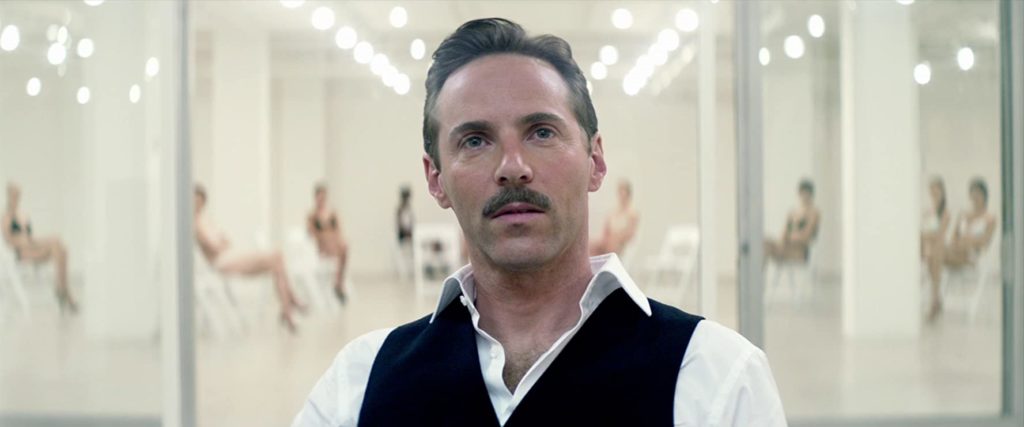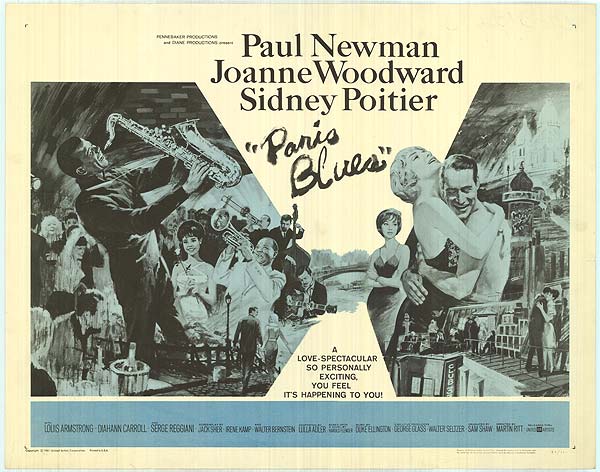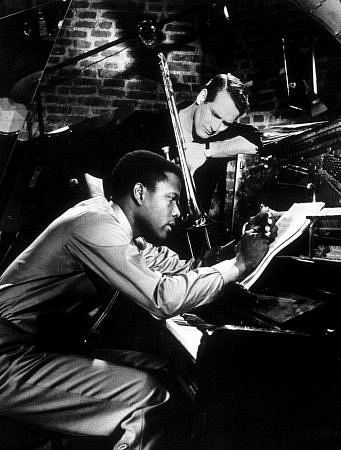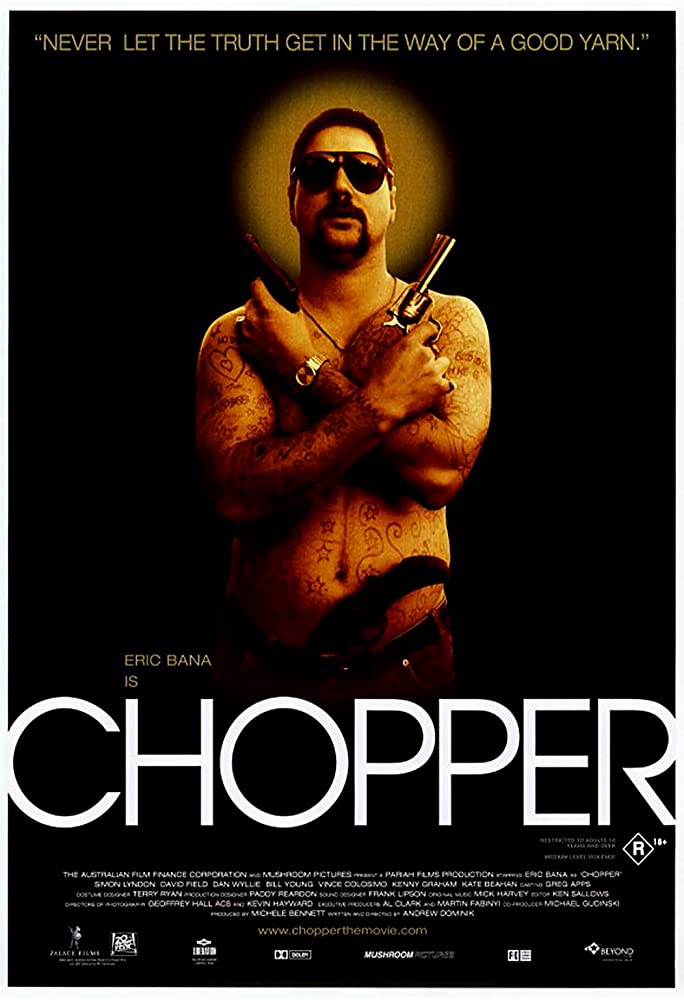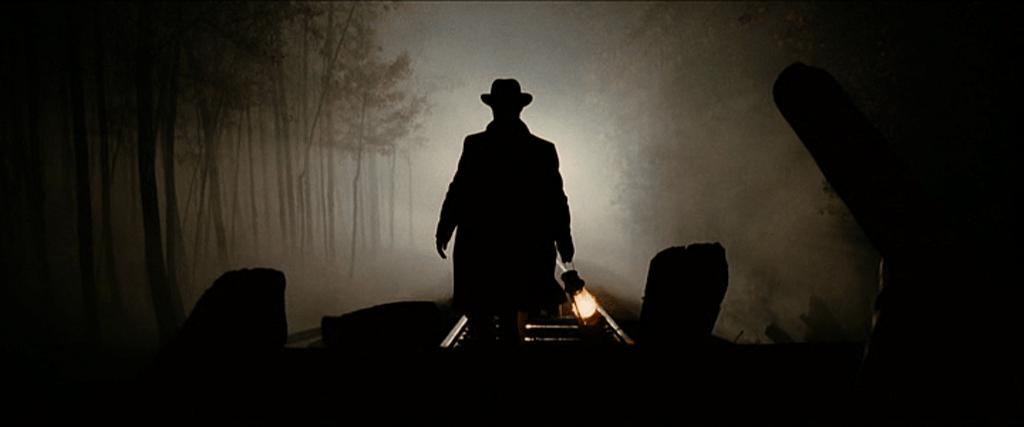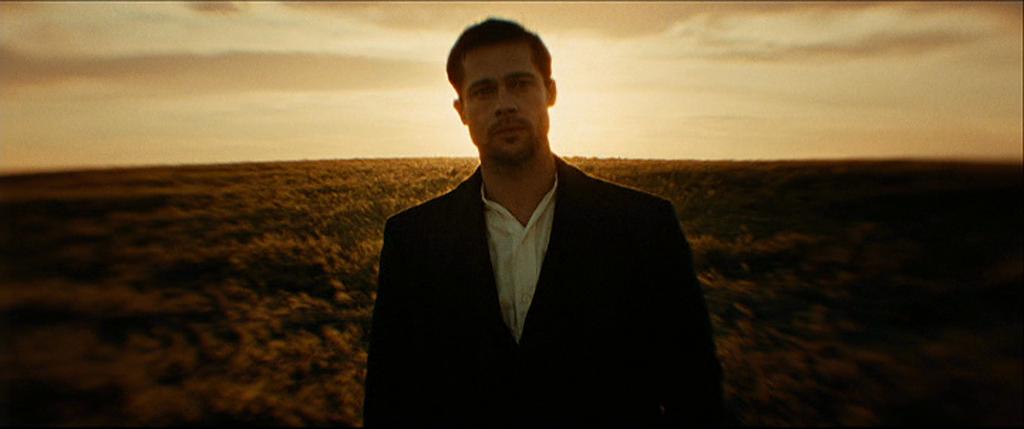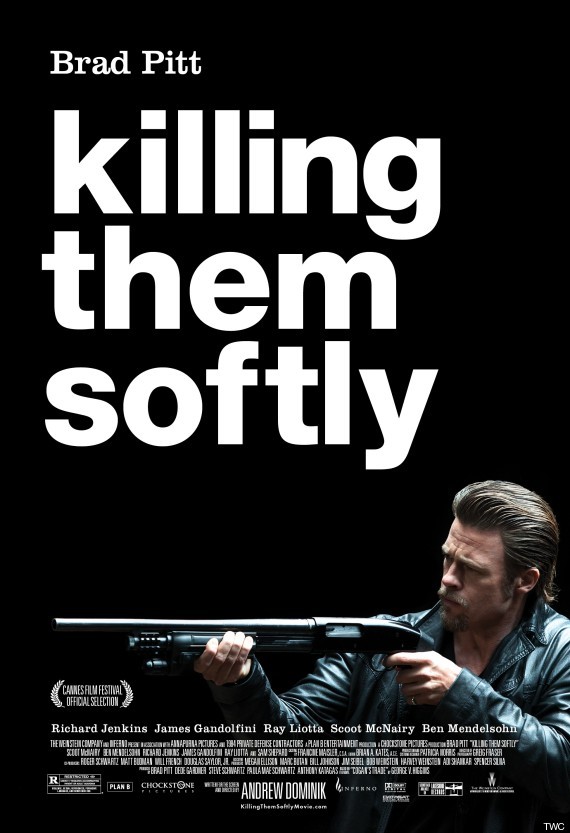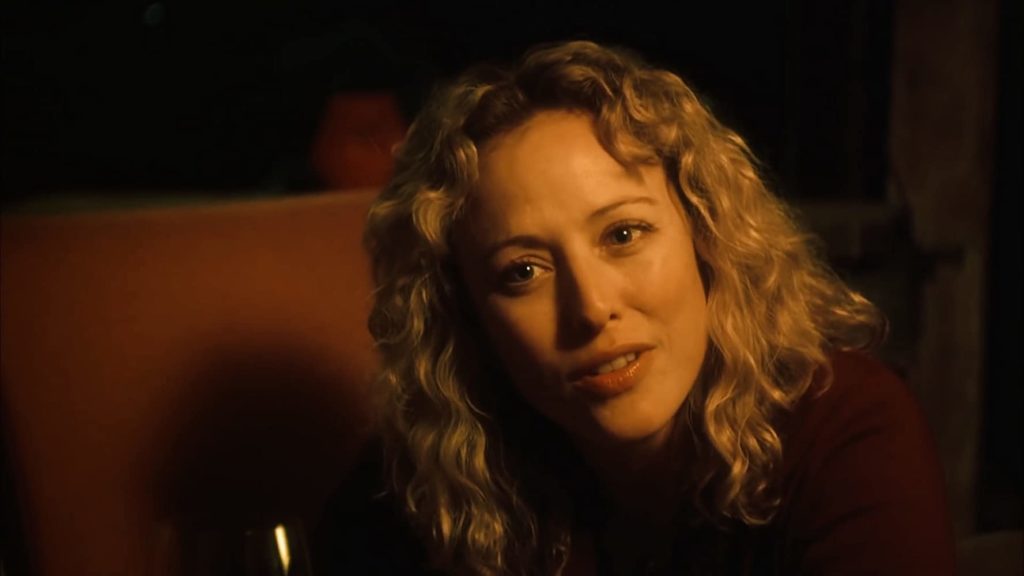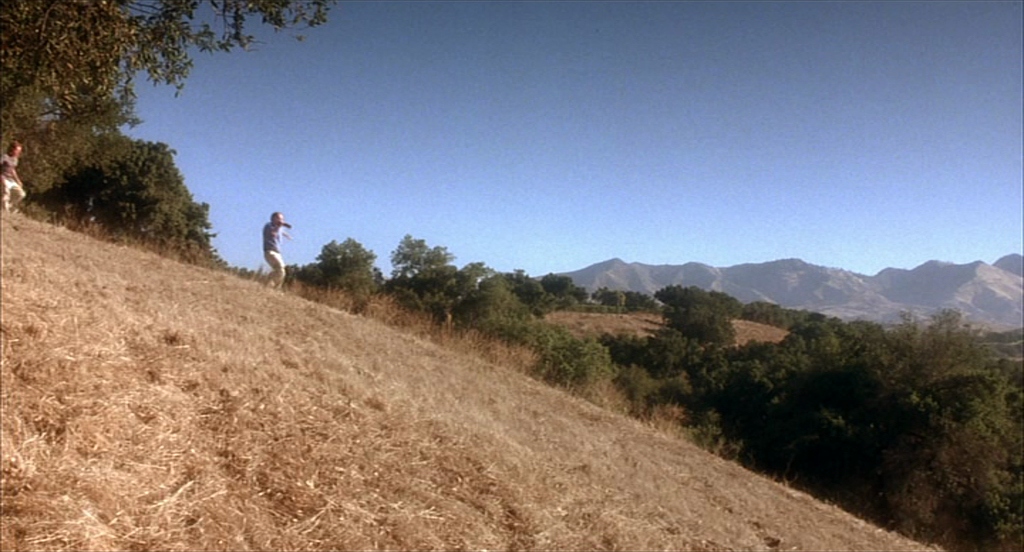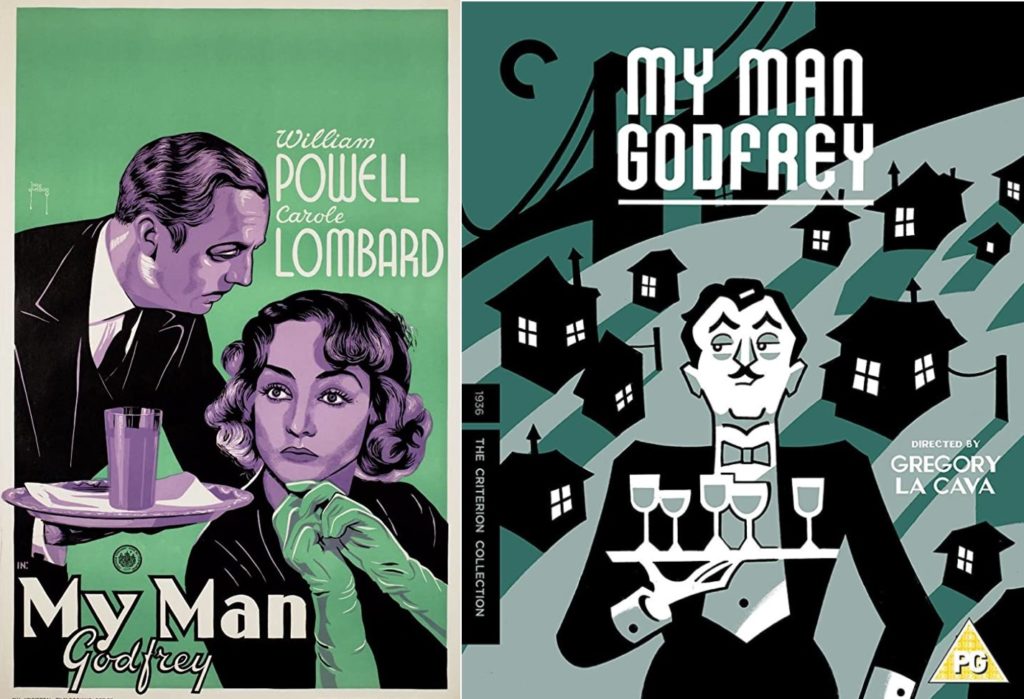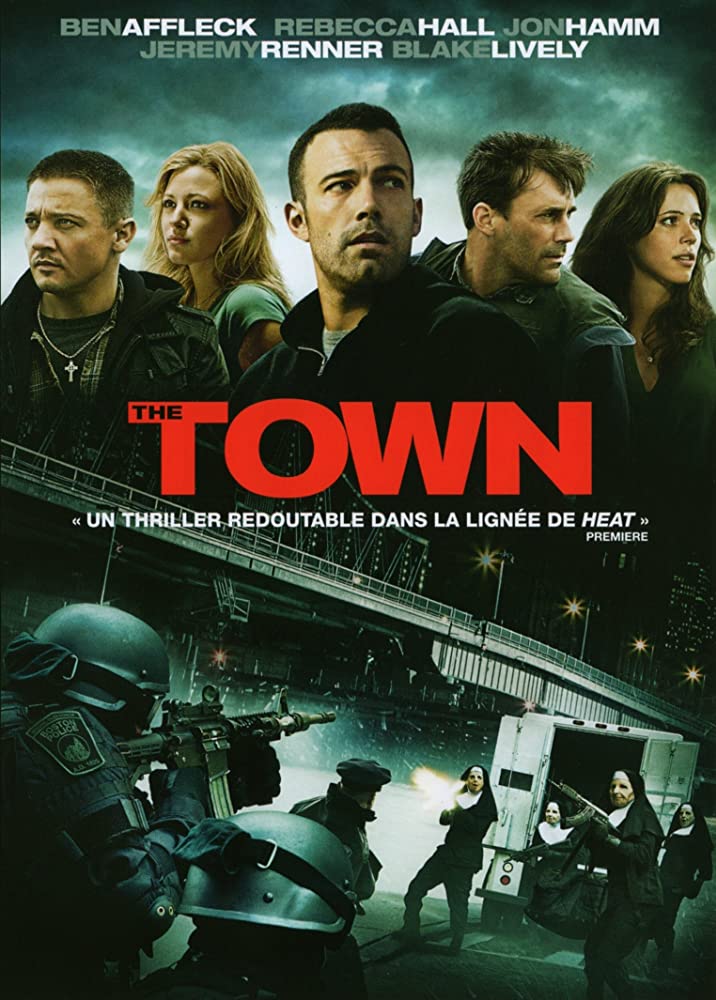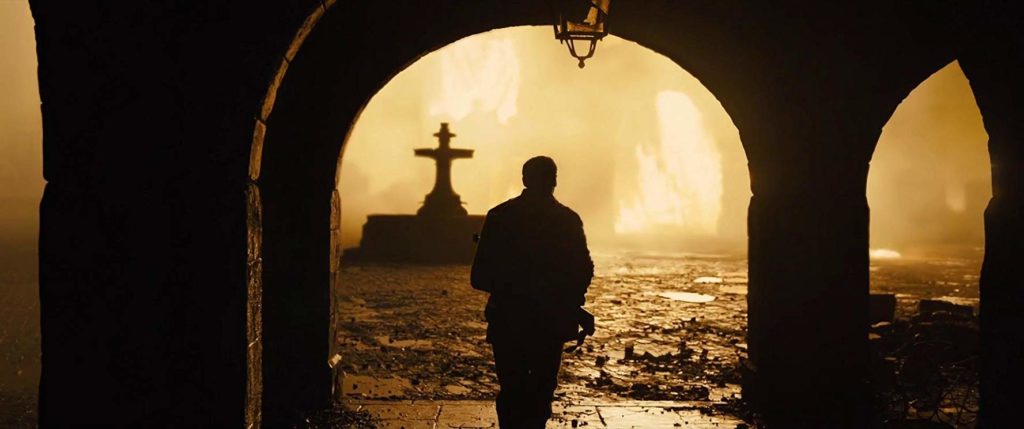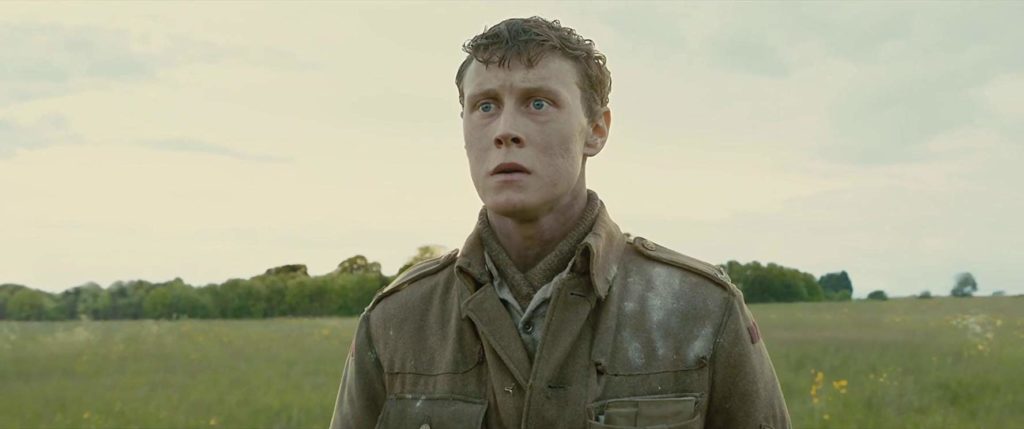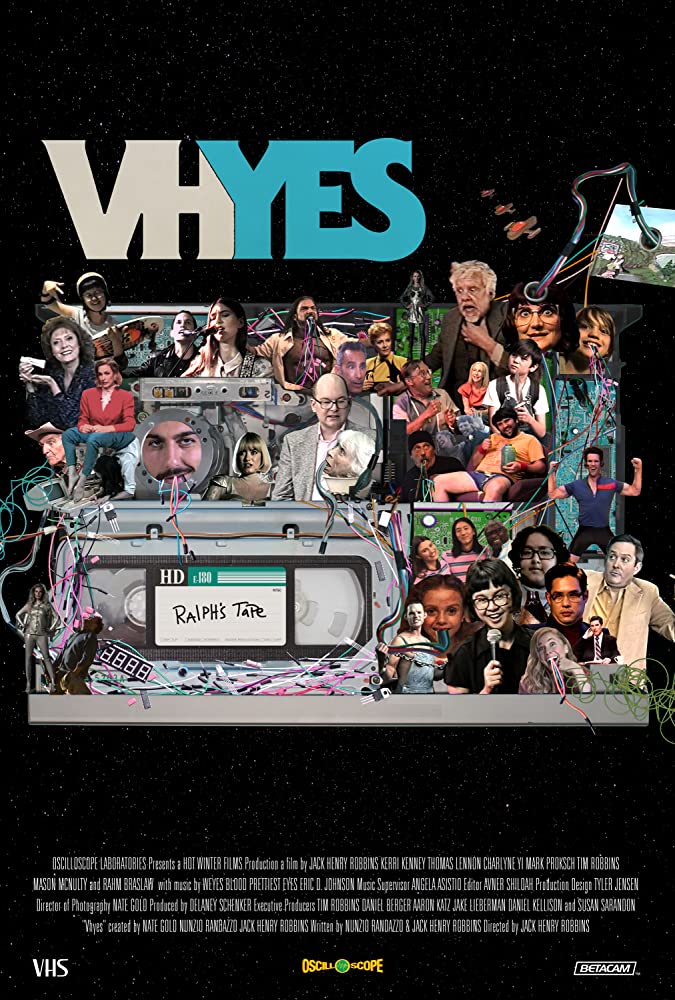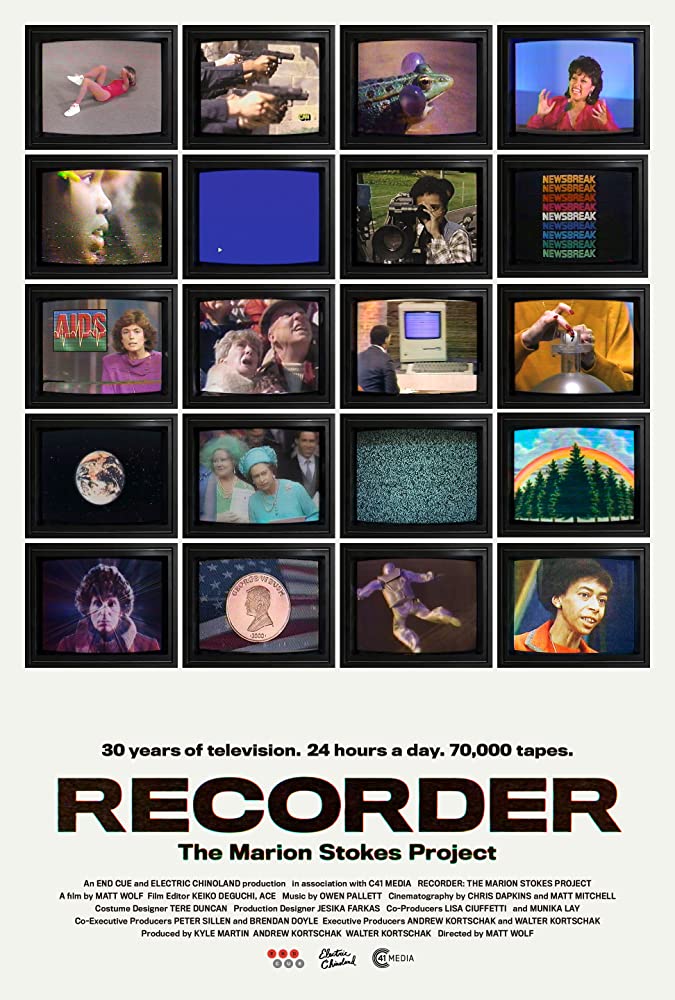Film Log #14 – 2.2024
Saturday, February 17th, 2024Went to Austin Film Society a few times recently.
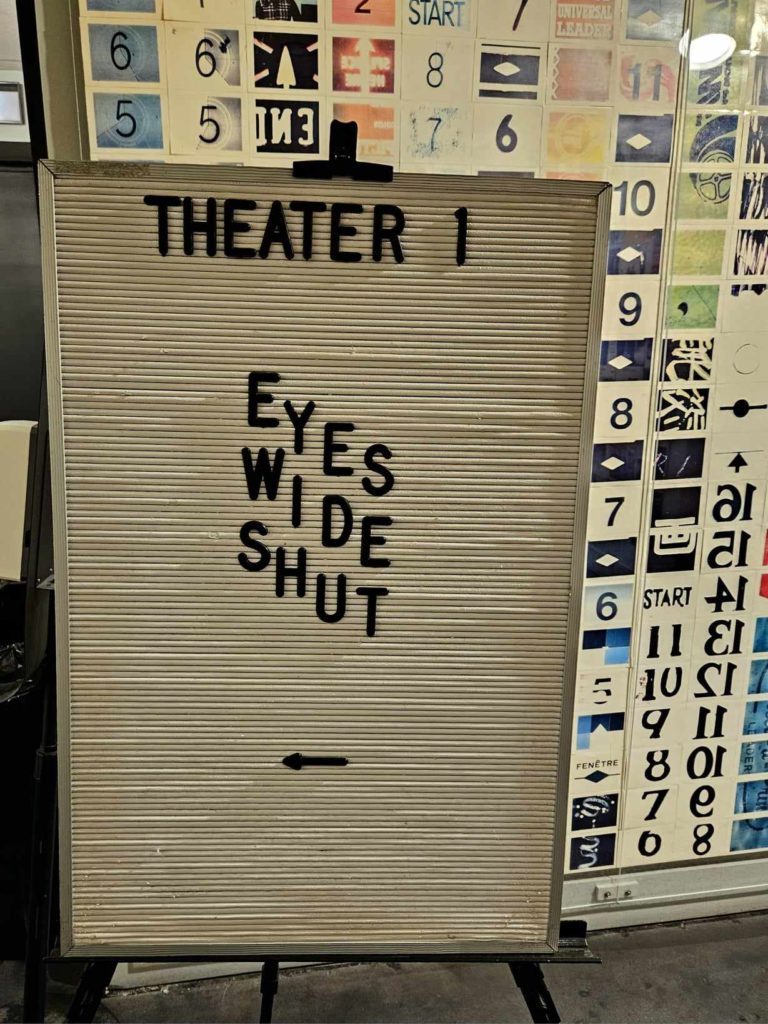
Eyes Wide Shut
Screened 12.29.23
Mostly due to it being nearly impossible to produce original critiques about any Kubrick film, I generally don’t jump at the chance to write about them. That said, after making it a point to see his pictures in theaters, thoughts do come to mind.
This isn’t a revelation, but Kubrick makes BIG pictures. There are no small characters, small lines, small shots, small ideas– everything is BIG. They are are philosophically big, laced with meanings, and definitely up for interpretation.
Awhile back, I saw Lost Highway (David Lynch, 1997) at AFS and thought it was a little on the disappointing side because it seemed as though an old man (Lynch) who had a hand in tilting pop culture towards something darker in the 80s and early 90s, was now reveling in the fact that the 1997 “mainstream” was overtly reaching towards depravity. It felt, at best, like a victory lap for Lynch, or at worst, a reminder to everyone that Lynch was the bellwether of the dark provocateurs that had captured so much of the late 90s mainstream (Marilyn Manson, Rob Zombie, etc).
Similar criticisms about Kubrick and EWS don’t ring true to me. This isn’t just an old man making his most sexually explicit film. This is more about making a film that floats around themes of (in)fidelity, (in)security, hierarchical rumors, possible conspiracies / cultish elite groupings (more on that) and shouldn’t be thought of as a desperate yawp from a dirty old man.
Having first seen it in the early 2000s, then once or twice in the two subsequent decades, this was my first time to see it in seven years (or so). Watching it with a 2024 perspective makes one draw some conclusions that might require a tinfoil hat and a penchant for conspiracies.
Important to note– I’m not prone to connecting dots that aren’t there. But I find it hard to watch EWS and not draw parallels to so many of the things making headlines today (most obviously– powerful elites involved in sexual acts that have grave consequences).
Anyways, perhaps EWS is only a reimagined adaptation of Arthur Schnitzler’s 1926 Freudian novella Traumnovelle (Dream Story in English) as the director claimed? Perhaps Kubrick heard some whispers about powerful people and decided to make a film about it? Hell, there’s even a storyline involving a father selling/pimping his young, very-underage daughter to foreign businessmen. Make of that what you will.
To remove the tinfoil hats and brush the conspiracies and cult behavior aside, we’ll return to the movie. Since Kubrick is regarded as a perfectionist, it’s strange that he allowed his actors to repeat the questions asked of them on four separate occasions. It’s the kind of weak improvisation or even weaker writing to have characters repeat one another like a child caught with their hand in the cookie jar kind of way.
When Tom Cruise is said to be a terrible actor, I have previously attempted to offer roles where, at one time or another, I felt like he did something more than bring his forced gregariousness and transparent charisma to the screen. Roles like he had in Collateral, Jerry Maguire, Magnolia, and EWS previously came to mind, but I’m guessing that Kubrick wanted an actor with this type of specific, aggressively flaccid charm to counterbalance the dark and sinister film’s ecosystem.
In retrospect, this film can hardly be offered up as a defense to the acting talents of Tom Cruise because his performance is quite honestly the film’s low point. That’s saying something considering the film is about a whole mess of terrible things (pedophilia, an HIV+ diagnosis, drug overdoses, rampant destructive orgies, etc) circling around the two main characters (Kidman + Cruise).

It’s not an easy watch. I don’t feel the need to watch it again. The main thing that changed for me after watching this film across three different decades is how it has an entirely new meaning after 2019’s headlines.
Speculation and conjecture to tether the subject matter to current events, sure. But, if you give it another go, I’m guessing you’d see it from a new perspective (or at least a perspective only a limited few had upon its release).
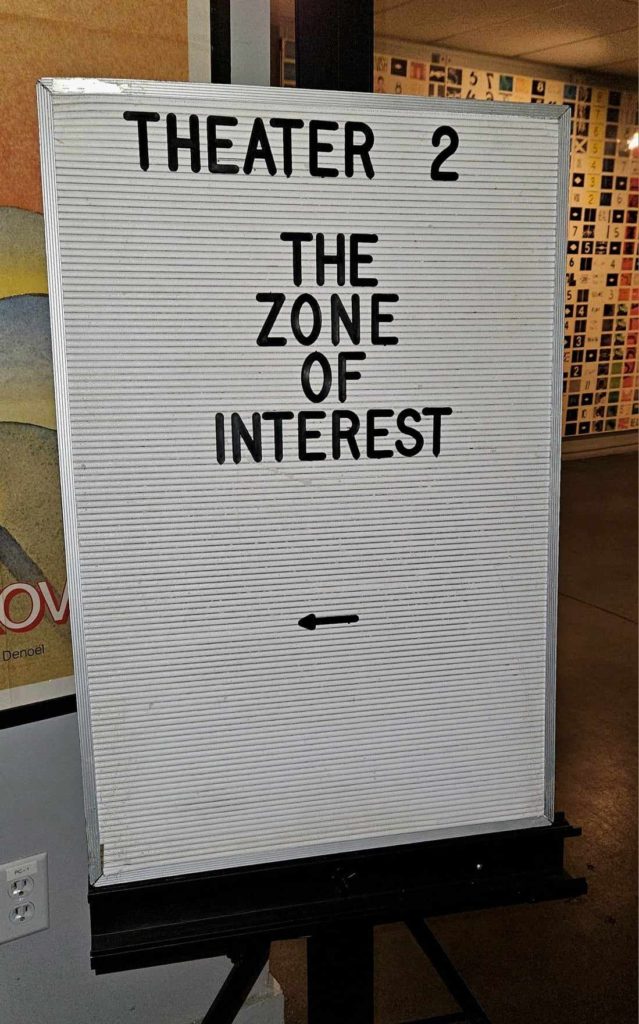
Zone of Interest
Screened 1.25.2024
*If you’d prefer to skip past as disapproving of a review as I can write and move onto a glowing review, here’s your chance. Skip now to Wings of Desire.*
I’m rarely blown away by cinema. My experiences usually ebb and flow from “bad” to “not-so-bad” and “pretty good.”
When a film does hit incredible notes and I’m enjoying each scene, character, cut, musical accompaniment, and I am totally fulfilled by a cinematic experience, I take note and try to examine how exactly that happened.
In 2019, I experienced this with Jonathan Glazer’s Sexy Best (released in 2000). Based on that, I have given Glazer’s subsequent films (Birth, Under the Skin) an enthusiastic watch and have been disappointed each time.
To describe Zone of Interest succinctly– ZoI is a study on the banality of evil. A depiction of the home life belonging to Rudolf Hoss, the commandant of Auschwitz.
To elaborate, we’ve all seen WWII/Nazi pictures before, but this film’s denouement is the most dissatisfying I’ve ever seen. Perhaps that’s the point?
This film is without a protagonist.
There is not a single character or motivation to root for.
We’re provided depictions of various levels of villainy– from Hoss’s wife trying on a fur coat whose rightful owner is, presumably, a recently murdered/gassed/incinerated Jewish lady to the Hoss’s conducting familial affairs while thousands of innocent people are systematically scorched per day (nearly 10,000 per day) a few hundred feet from where the principle characters conduct their lives and fight to remain in what they refer to as their “dream home”– it’s a despairing cavalcade of evil.
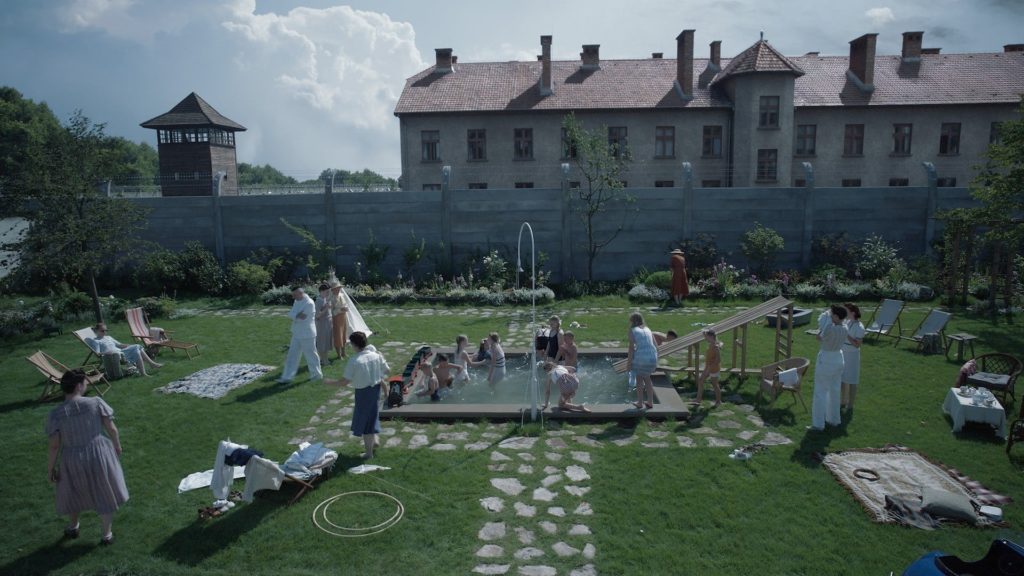
It’s hard to see a film with this subject matter and not unfavorably compare it to something like Schindler’s List, but where SL showcases exceptional care for story, characters, meaning, and payoff– ZoI replaces those with a sterile technique to further beat into the audience just how disinterested Glazer is in crafting narrative. Much like Glazer’s past two films following Sexy Beast, Glazer isn’t interested in character/story, he just wants to flesh out ideas on screen. Which is fine. It’s fine. They just feel more like video exercises than narratives.
I’m only looking for something to provide me with an explanation of what contemporary art/award-seeking cinema is trying to be. I’ll be writing more about this soon (I saw Poor Things recently), but I find contemporary art pictures have become, pardon the updated vernacular here, the equivalent of doom scrolling for the entirety of a feature-length film.
Are we trying to make our films feel similar to scrolling social media? This cannot be the goal, but it often feels like that’s exactly the film’s goal.
I’m not asking for rose-colored pictures where everything is perfectly peachy and hunky dory. Hell, my favorite films don’t have happy endings, but they’ll at least feature a journey that I mostly support. I’m only asking for the screen to provide me with a reason to vest my interest and have hopeful concerns.
However, when it comes to Rudolf Hoss and ZoI, I enter the film already believing him to be an evil Nazi, and though I’m provided a glimpse of the squabbles he had with his wife and the corporate maneuvering of the Nazi party before many of the top officials met their neck-breaking noosed ends, I’m not at one point drawn to care about this picture.
There is zero dimensionality to anybody on screen.
There isn’t a meaningful conflict (the presumed conflict is “how does this family function when there are rigidly scheduled horrors occurring 50 feet from their home?”).
Unless you are creepily into what Nazi families’ lives were like as they were profiting from and contributing to a heinous genocide, I do not understand how this film could captivate anyone.
Prior to the screening, I thought the motivation behind making this picture would be to put the audience in an uncomfortable position of “this is a family drama with heartfelt moments except… they’re Nazis so any of the ‘Golden Rule’ lessons that parents teach their children is entirely hypocritical because… they’re Nazis so, audience, how about you go ahead and chew on that discomfort for a while?”
Admittedly, neither my prior expectations or the actual film proved to be any good.
My recommendation is to skip this one.
Watch Europa, Europa; Schindler’s List, The Pianist, or any other WWII picture if you’re feeling like a WWII picture.
If you’re looking for a video exercise and dramatization of the banality of evil, perhaps ZoI is the one for you.

Wings of Desire
Screened 2.9.2024
For all the times I discuss the importance of a properly-weighted Three-Act Structure, this film is an exception. It wonderfully plays out in two halves.
The first half shows us the reverence two angels, Damiel and Cassiel, have for the life they’ve observed since time immemorial. Most importantly, what they’re witnessing presently.
Set in Berlin in the mid-1980s, 40-ish years after WWII, Berlin is indeed a sad place. Aside from a Holocaust survivor’s thoughts that the angels listen in on, the film doesn’t directly focus on a nation that’s attempting to turn the page on the atrocities staining their previous generation(s), but there’s an overarching feeling of sadness and isolation to the picture (plenty of scenes include the Berlin Wall).
This film reminded me so much of Robert Altman’s Nashville. I wrote about how that film did a remarkable job of capturing the 1970s Middle American zeitgeist. Though I didn’t personally experience USA’s 1970s or Germany’s 1980s, these two films seem to capture a collective consciousness of these times and places.
That alone is a success. Many artists and journalists aim for that and miss.
The first half reminds us that even when lives are tough, or we feel beatdown, downtrodden, that life is worthwhile. These aches, pains, failures, and emotional let downs are a part of life and that life itself is far better than the alternative. Apparently it’s even better than being an angel whose only function is to observe.

And that brings us to the second half where Damiel decides to trade in his wings and finally get to experience life instead of devoutly manning his lifeless post.
After Wenders perfectly exhibits how difficult human existence can be, he exceptionally flips the narrative to show just how fortunate we are to have these burdensome lives.
I know this sounds hokey, but this dichotomy of “aren’t we lucky to be able to experience the complications and sorrow of humanity?” isn’t an easy story to tell, but Wenders does it without pretension and without being corny.
For as many films as I’ve been watching lately that depict a never-ending stream of two-dimensional hate-worthy characters, it was so refreshing to revisit a film where compassion is felt for nearly every character. It’s been too long since I actually wanted to learn more about a narrative world. At 127 minutes, that’s certainly enough movie, but I still feel like I wanted to spend even more time with these people. Like the angels, I wish to personally be able to wish them well. I’m motivated to have hope for these fictitious characters. For as difficult as it is for me to catch myself actually being inspired by “stories of humanity,” this film is inspiring; it’s an unmitigated success.
There aren’t many films that I can give this recommendation, but– if you’re ever at a very low place, give Wings of Desire a shot.
It’ll provide some perspective and hope.
Admittedly, this review is hokier than the film.






